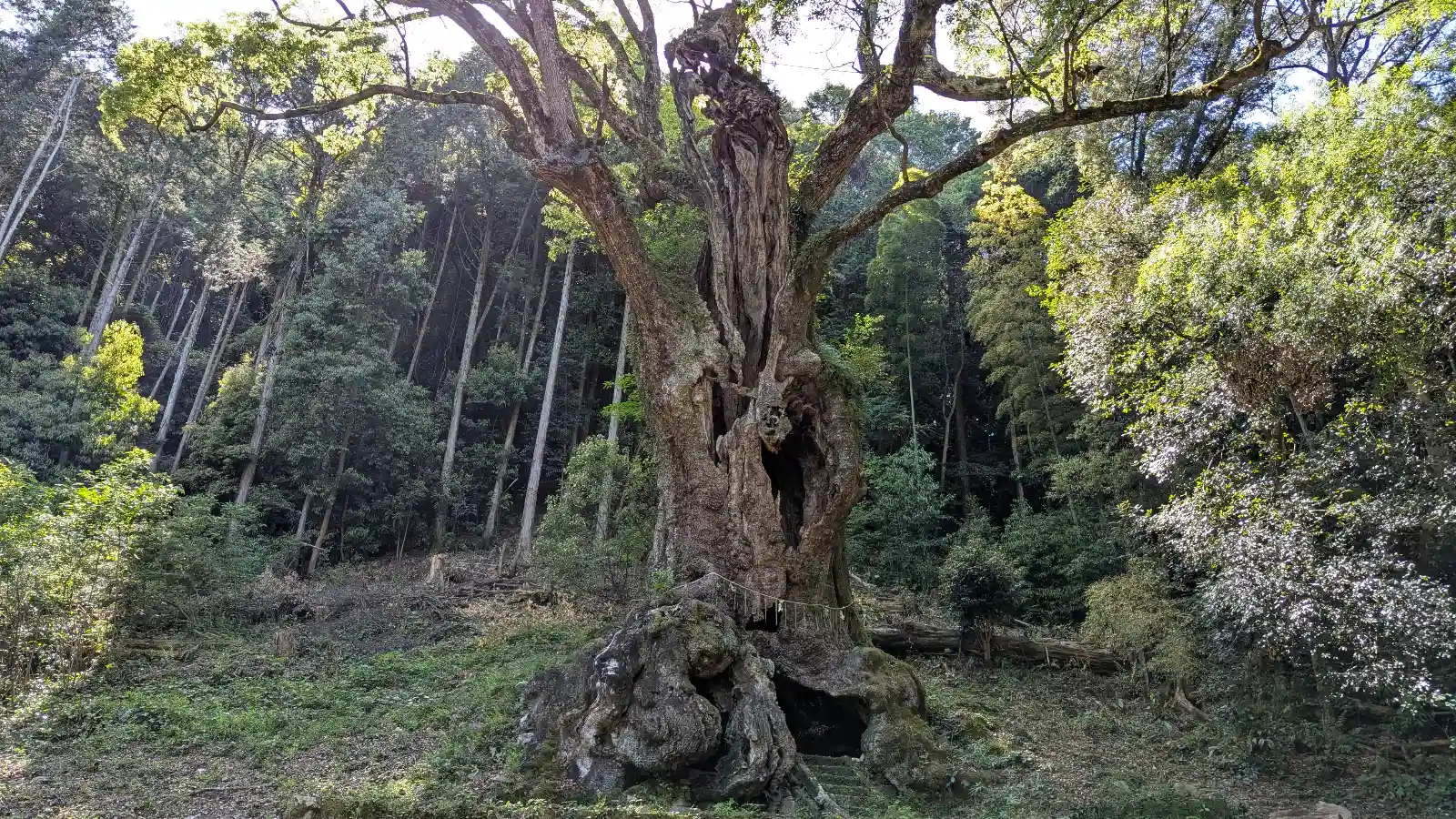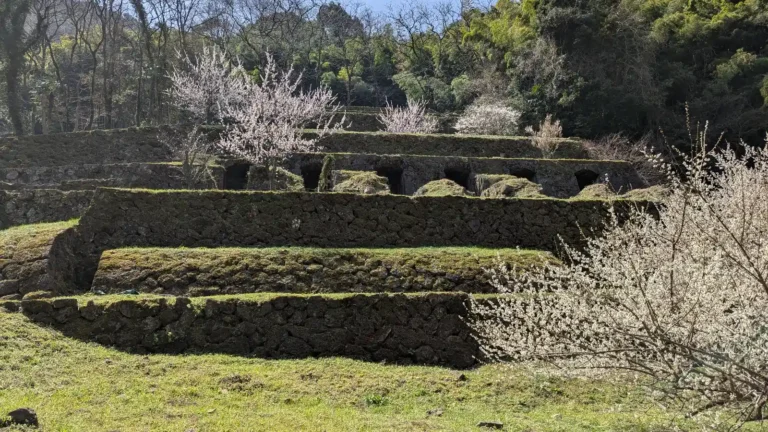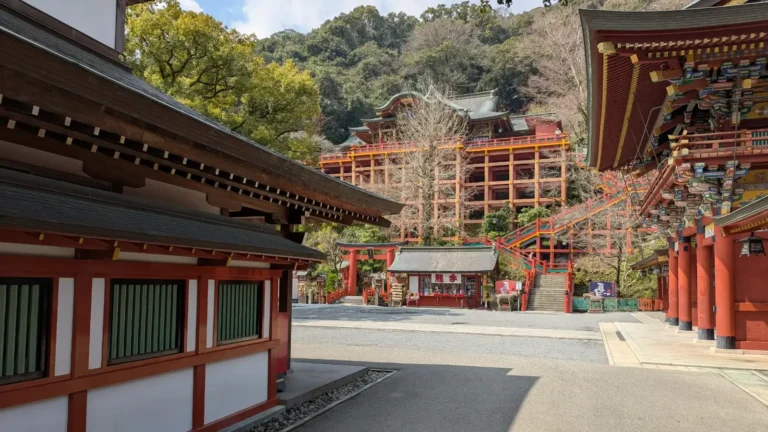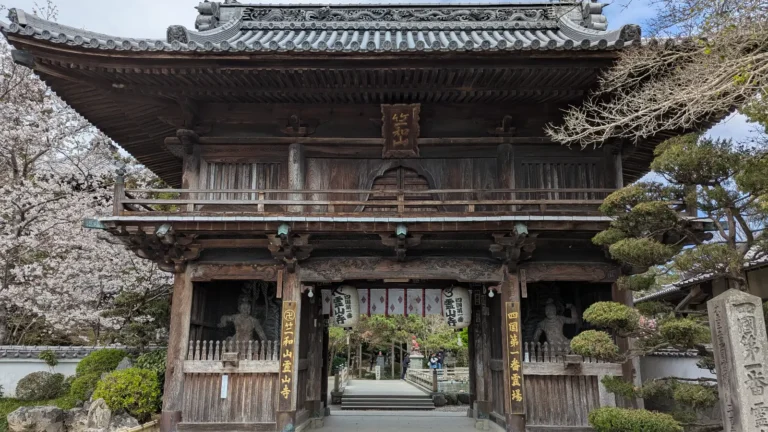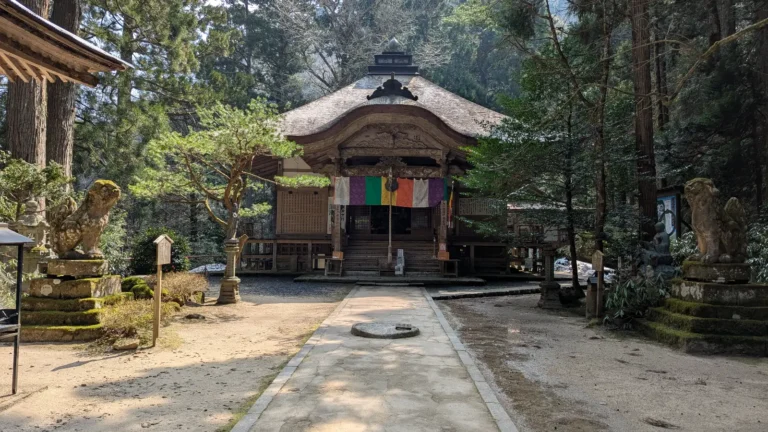Takeo Shrine & The Great Camphor Tree: A Sacred Space in Kyushu
A Sacred Shrine Beneath the Oldest Tree in Saga
Tucked into the outskirts of Takeo City in western Saga Prefecture, Takeo Shrine (武雄神社) is a quiet Shinto sanctuary best known for the ancient tree that towers behind it. The Great Camphor Tree (武雄の大楠), believed to be more than 3,000 years old and among the oldest in all of Japan, stands over 27 meters tall, with a hollowed trunk wide enough to step inside. Together, the shrine and the tree form a sacred site that has been revered for centuries, drawing visitors not for grandeur, but for the calm presence they offer beneath the forest canopy.
Takeo Shrine & The Great Camphor Tree at a Glance
- Region: Kyushu (Saga Prefecture)
- Nearest City: Takeo (Takeo City)
- Type of Site: Shinto Shrine & Sacred Tree
- Best Season to Visit:
- Spring (March–April): Camphor leaves begin to fill in, shrine grounds are quiet and green
- Autumn (October–November): Crisp air, golden light, and fewer visitors
- Winter (December–February): Bare branches reveal the full shape of the tree, peaceful shrine atmosphere
- Accessibility: Easy – Flat paved paths from the parking area; stroller and wheelchair friendly
Why Takeo Shrine & The Great Camphor Tree is Sacred
- Takeo Shrine has stood for over 1,300 years and remains an active site of Shinto worship, offering prayers for protection, harmony, and natural connection.
- The shrine’s setting in a quiet forest clearing emphasizes stillness and spiritual reflection rather than architectural grandeur.
- Just behind the main hall, the Great Camphor Tree (Takeo no Ōkusu) is believed to be over 3,000 years old, making it one of Japan’s oldest living trees.
- The tree stands over 27 meters tall with a trunk circumference of more than 20 meters; its hollow interior is large enough to enter.
- Marked by shimenawa rope and small altars, the tree is venerated as a shinboku, a sacred tree believed to house divine kami.
- The connection between shrine and tree creates a layered spiritual experience that blends Shinto tradition with deep reverence for the natural world.
Must-See Wonders at Takeo Shrine & The Great Camphor Tree
The Great Camphor Tree
- Over 3,000 years old, among Japan’s oldest living trees
- Towering 27 meters tall, trunk over 20 meters in circumference
- Hollow interior large enough to step inside, filled with stillness
- Marked with shimenawa, worshipped as a sacred shinboku
- Offerings left quietly in the hollow, coins, prayers, folded wishes
Takeo Shrine
- Founded over 1,300 years ago, still active and deeply local
- Dedicated to Ōkuninushi-no-kami, deity of harmony and connection
- Modest wooden architecture set in a quiet forest clearing
- Torii gate framed by trees, with gentle light filtering through
- Prayers offered slowly, presence felt more than performance
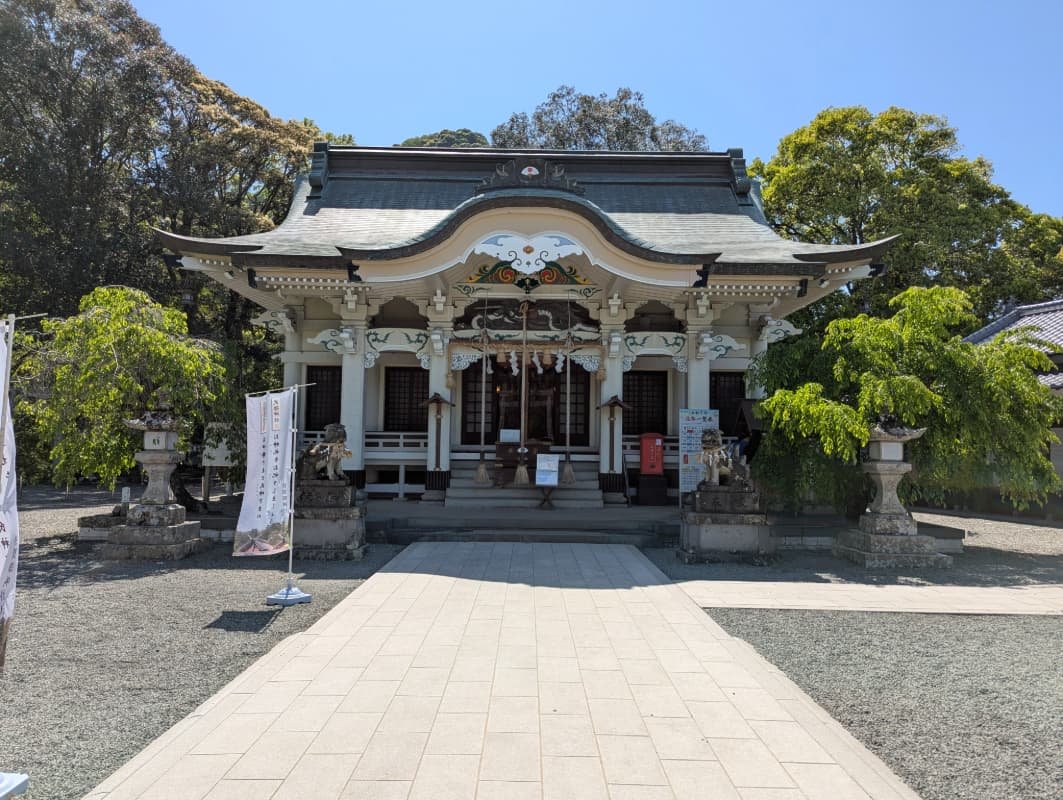
Local Secrets: Tips from Those Who Know Takeo Shrine & The Great Camphor Tree
- Locals say the best time to visit is just after sunrise, when the grounds are empty and the light cuts low through the trees
- Rain deepens the color of the bark, the tree appears darker, older, more alive
- Some believe the hollow holds a quiet power; they step inside not to speak, but to listen
- The shrine sells small omamori charms made from fallen camphor leaves, available only at certain times of year
- Children are often told to bow before the tree as if bowing to an elder, not out of fear, but out of respect
Nearby Sacred Spaces
- Mifuneyama Rakuen – Vast seasonal garden beneath Mount Mifune; sacred stone formations and forest paths echo temple roots (5 min by car)
- Keishūen Garden – Quiet strolling garden behind the Takeo City Library; moss, water, and modern stillness hidden in plain sight (short walk)
- Ureshino Onsen Temples – Small, often-overlooked shrines and temple steps scattered across the hot spring town (25 min by car)
Getting to Takeo Shrine: Paths to Discovery
- By Train – Take the JR Sasebo Line to Takeo-Onsen Station, then walk or take a short taxi ride (~5 min)
- By Car – Easy access from central Saga (~1 hr) or Nagasaki (~1 hr 20 min); free parking available near the shrine entrance
- Hours – Shrine grounds open year-round from sunrise to sunset
- Accessibility Notes – Flat, paved paths; wheelchair friendly; no steep climbs or steps required
Resting Beneath the Branches: Where to Stay Near Takeo Shrine
- Kyotoya Ryokan (Takeo Onsen) – Longstanding traditional inn with riverside views and serene indoor baths; known for quiet hospitality and seasonal meals
- Central Hotel Takeo – Clean, modern, and affordable stay near the train station; ideal for short visits or early departures
- Wataya Besso (Ureshino Onsen) – Upscale riverside retreat with open-air hot springs and elegant rooms; perfect for those combining sacred visits with onsen healing (25 min by car)
You’ve Seen the Map, Now It’s Time to Write Your Own Journey in Takeo
Not all sacred spaces are shaped by grandeur. Some are held in wood and roots, in the silence between shrine and tree.
Takeo doesn’t ask for attention. It waits, in the curve of the path, in the breath of the forest, in the hollow of a tree that has watched centuries pass. Whether you come seeking stillness, renewal, or a quiet place to simply be, the way opens gently here.
So the question isn’t whether the tree is sacred.
It’s whether you’ll stand long enough to feel what still lives inside it.

